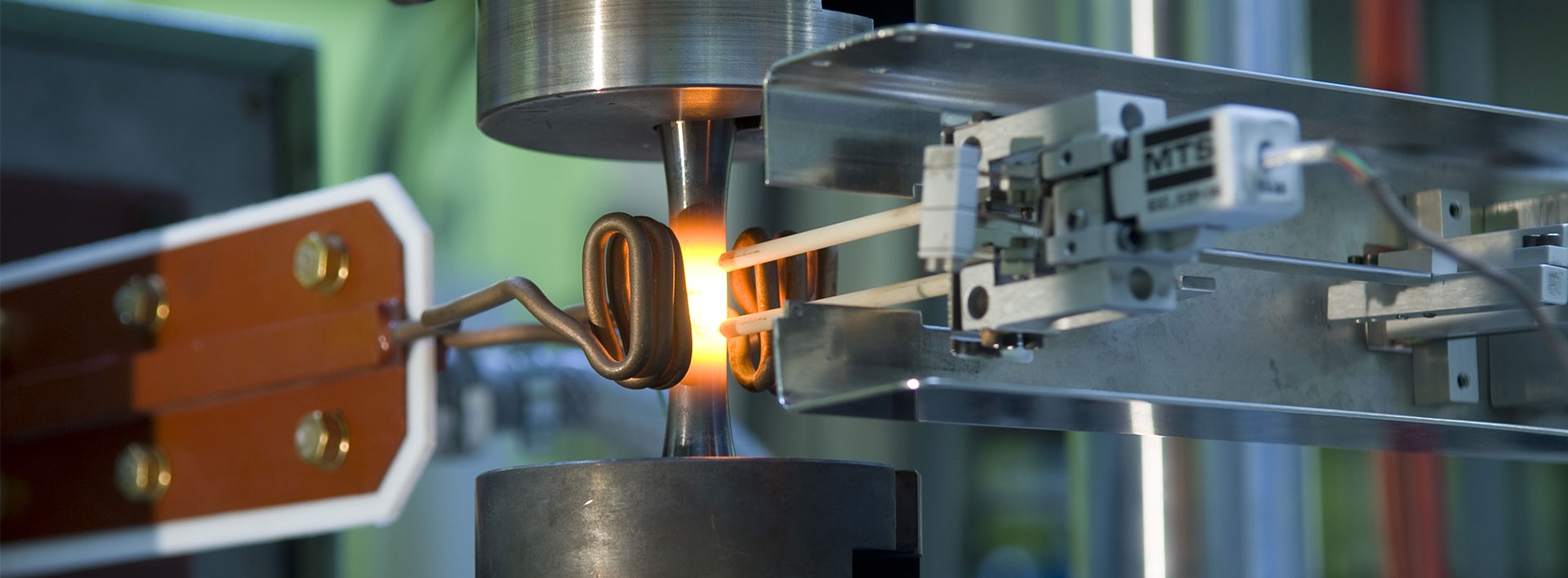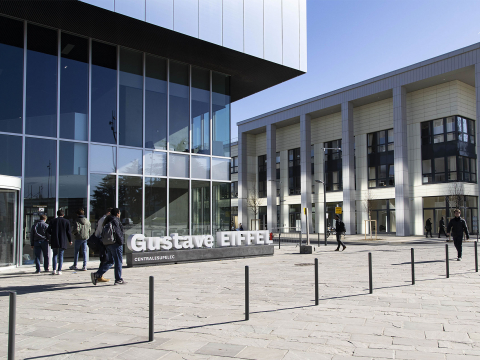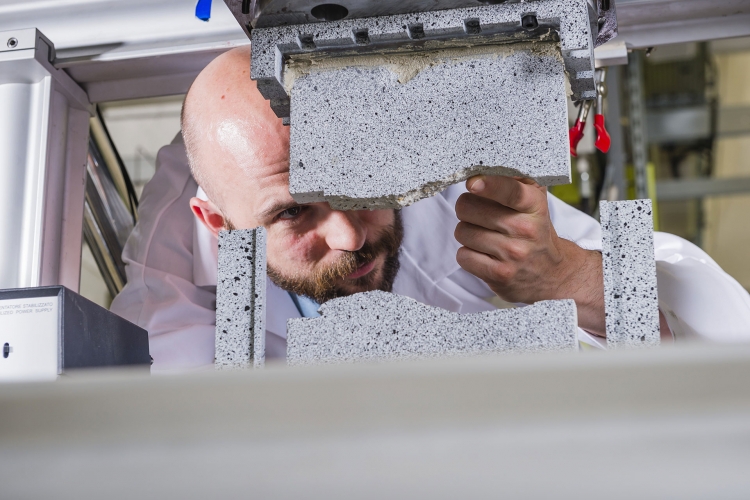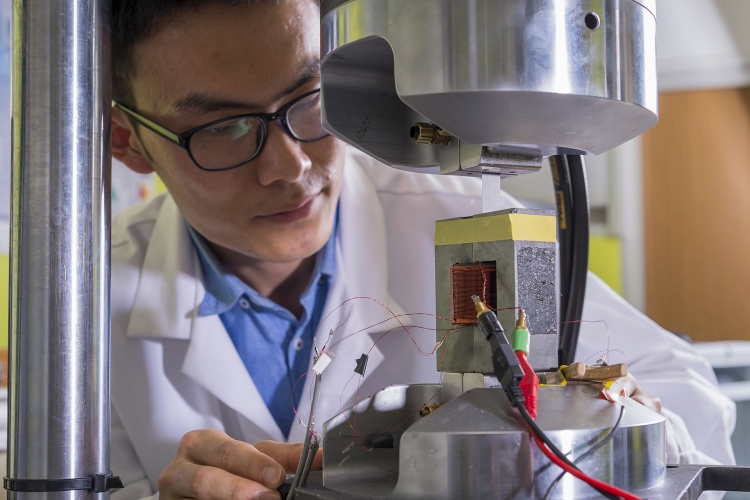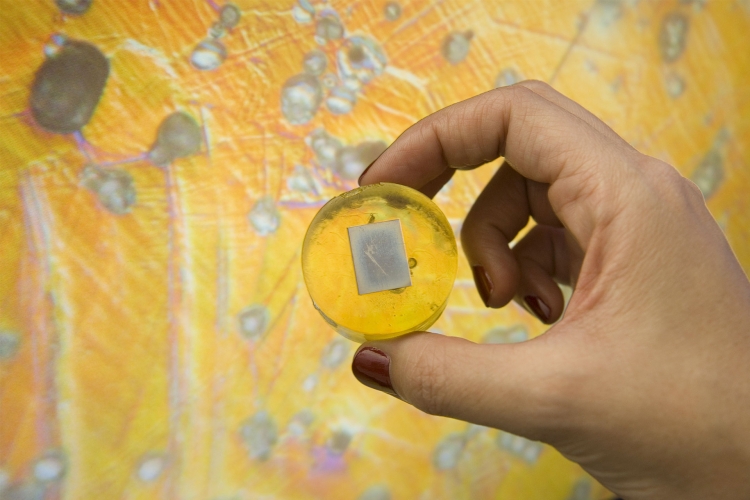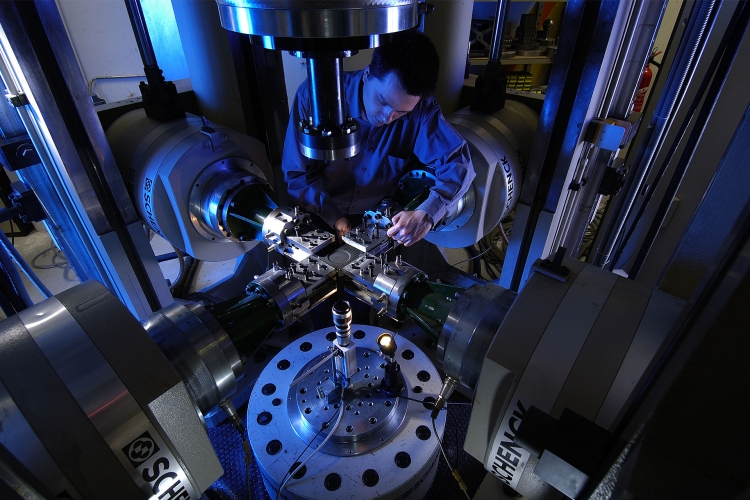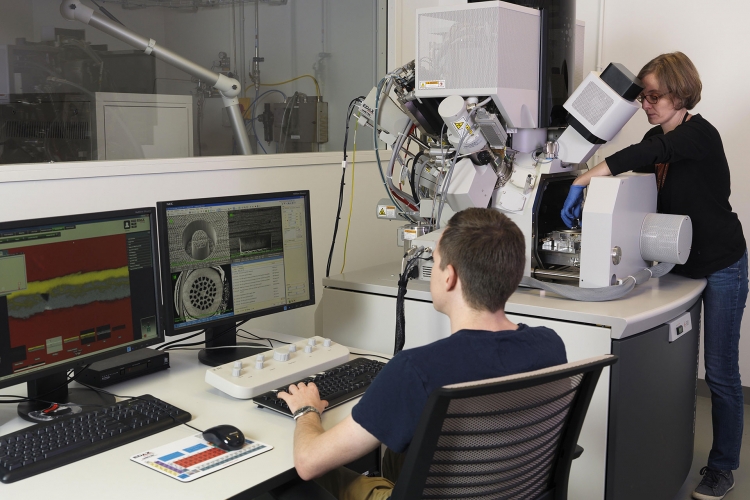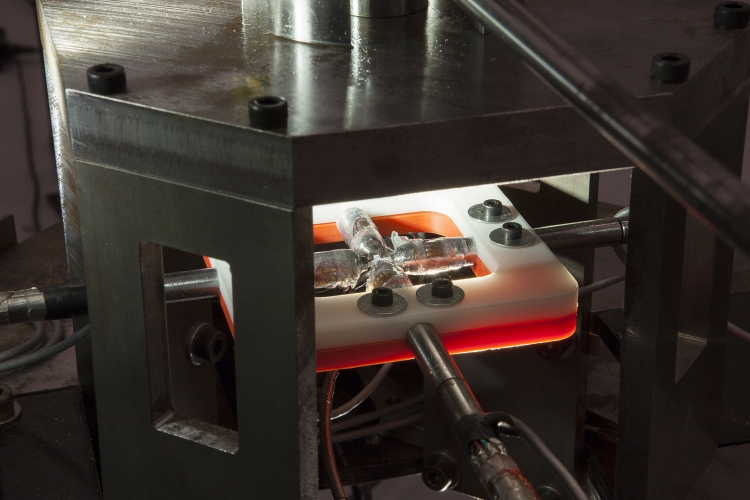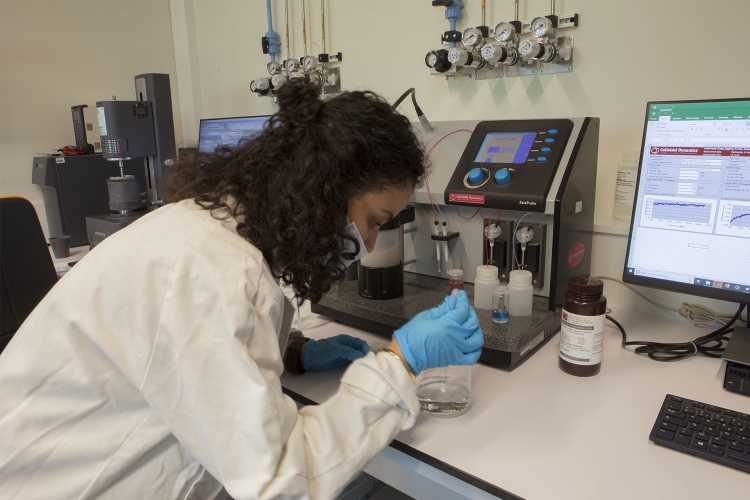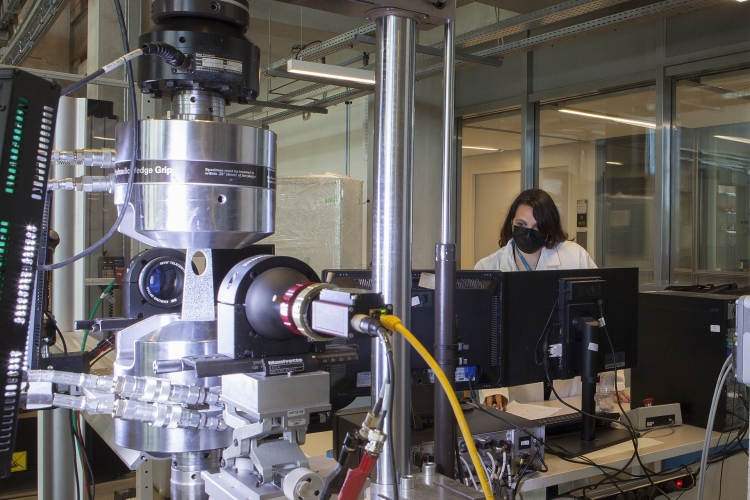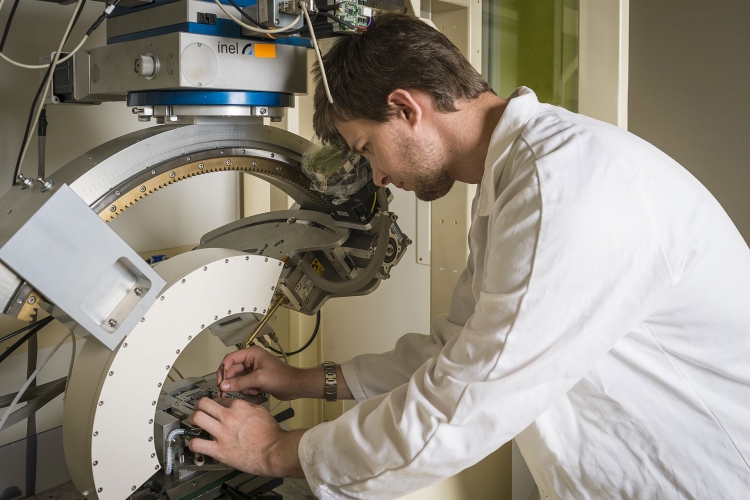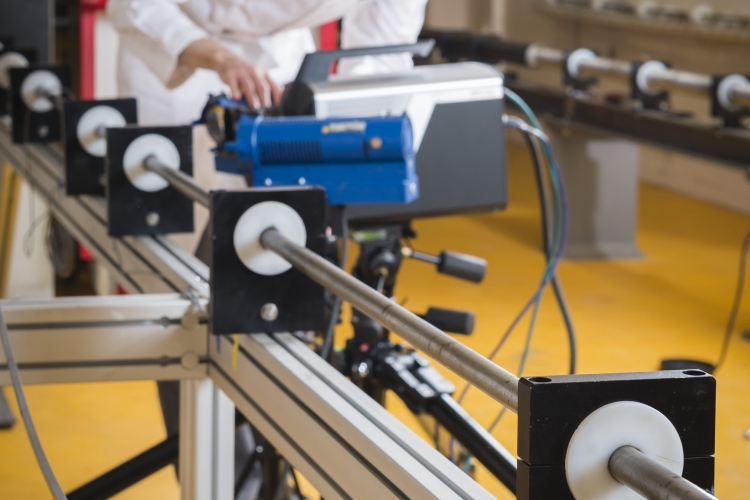Laboratory
Presentation
LMPS
A laboratory of Université Paris Saclay, CentraleSupélec, ENS Paris-Saclay and CNRS
On January 1, 2022, on the Saclay plateau, the Paris-Saclay Mechanics Laboratory (LMPS) was created from the merger of the Mechanics and Technology Laboratory (LMT) and the Mechanics of Soils, Structures and Materials Laboratory (MSSMat).
Located on the sites of ENS Paris-Saclay and CentraleSupélec, the LMPS is headed by Pierre-Alain BOUCARD as director and Véronique AUBIN as deputy director.
With a staff of almost 220, this new research unit, dedicated to experimentation, modelling and simulation in solid mechanics, aims to help meet the challenges in the strategic areas of developing clean, safe and efficient energy, managing resources carefully and adapting to climate change, sustainable transport and urban systems, the reliability of complex systems and industrial renewal.
Research at the LMPS
Themes
The LMPS structures its activities and develops its resources around the following themes.
- Experimental mechanics, with the originality of multi-axial aspects, hybrid control, multi-modal 2D-3D-4D in situ field measurements, multiphysical and/or small-scale measurements and stresses, integrated approaches, chemical-mechanical ageing, dynamics.
- Mechanical behaviour and its couplings, magneto-electro-mechanical couplings, phase changes, meso-structured materials, non-linear behaviour, manufacturing processes, hydric/mechanical couplings, chemical/mechanical couplings, deferred deformations and ageing.
- Damage, instabilities and failure, mixed mode fatigue cracking, anisotropic damage, small scale cracking, gradient effect, surface integrity and fatigue life, hybrid micro-meso modelling of composite damage and scaling effects.
- Simulation and HPC, model reduction, domain decomposition, scale transitions, optimisation, dynamics and vibrations, dedicated wave propagation and medium frequency approaches.
- Verification and validation, probabilistic analyses, taking into account uncertainty, optimisation, data-driven control.
Societal challenges
- Safe and efficient clean energy
- Sustainable transport and urban systems
- Reliability of complex systems
- Industrial renewal
- Sober resource management
- Safe societies - protecting freedom and security.
Partnerships
These challenges are largely carried out in relation with the industrial world and organisations from the following sectors of activity: the environment, aeronautics, space, defence, transport including the automobile, energy including nuclear engineering, civil engineering, health
Industrial partners :
- Airbus, Ariane Group, CNES, Dassault Aviation, MBDA, Safran, Thalès
- Renault, Stellantis, Michelin, RATP, SNCF
- EDF, IRSN, IFP, Mitsubishi Electric, Orano, Saint-Gobain
- ArcelorMittal, Aperam, Tata Steel, Vallourec
- Bouygues construction, Ecocem, sixense, ANDRA, CEMENTYS, IREX
- Altair, Dassault Systèmes, EikoSim, ESI, SIEMENS
- Air Liquide, BIOMODEX, cetim, GE Healthcare, iXblue
Organisations :
- CEA, DGA, INRIA, ISL, ONERA
Saclay plateau partnerships :
- Safran, EDF, CEA, ONERA…
History of the LMPS
The LMPS is the result of the close collaboration and merger of the LMT and MSSMat laboratories.
The merger of these two laboratories was all the more natural as they share scientific themes on all facets of solid mechanics: mechanics of materials and structures, civil engineering, fine experimentation and high-performance digital modelling.
The LMT
Created in 1975, the Mechanics and Technology Laboratory is a joint research unit of the École normale supérieure Paris-Saclay, a major training and research school open to international and multidisciplinary activities, historically strongly committed to engineering sciences and leader of the Graduate School of Research and Higher Education, and the CNRS (UMR 8535).
The laboratory was originally under the supervision of ENS-Cachan (which became ENS Paris-Saclay in 2017) and the Pierre and Marie Curie University (UPMC). In 2013, with the withdrawal of UPMC, LMT-Cachan became LMT.
The LMT-Cachan/LMT was successively directed by Jean LEMAITRE (1975-1980), Pierre LADEVEZE (1981-1984), Mircea PREDELEANU (1985-1992), Giuseppe GEYMONAT (1993-1996), Pierre LADEVEZE (1997-2005), Olivier ALLIX (2006-2009), Ahmed BENALLAL (2010-2013), Frédéric RAGUENEAU (2014-2019) and Pierre-Alain BOUCARD (2020-2021).
The MSSMat
Created in 1987, the MSSMat, Laboratory of Soil Mechanics, Structures and Materials, is a Joint Research Unit under the supervision of CentraleSupélec, a leading engineering school training high-level scientific engineers, leader of the Graduate School of Engineering and Systems Sciences of the University of Paris-Saclay, and of the CNRS (UMR 8579).
The laboratory was known as LMS (Laboratoire de Mécanique des Sol), under the supervision of CenteraleSupélec since 1969. In 1987, the LMS merged with the Laboratoire d'Étude des Matériaux to become the MSSMat.
The LMS/MSSMat has been directed by Jean BIAREZ (1969-1993), Philippe BOMPARD (1994-2003), Denis AUBRY (2003-2006), Jean-Maris FLEUREAU (2006-2009), Hachmi BEN DHIA (2010-2015), Damien DURVILLE (2016-2019) and Véronique AUBIN (2020-2021).
